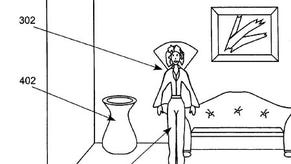Kinect Adventures
Bundle of fun?
Ah, the strange case of the bundled game. That spot in the hardware box at launch was once reserved for cast-iron classics that would instantly justify your purchase. Now, as gaming's technology and audience diversify, the pack-in tends to act as demo and marketing tool, adding value and pointing the way to potential rather than attempting to define hardware with software.
Still, there's a curious burden placed on these games which are nominally free, yet in a sense share the price tag – and hype – attached to whatever they fell out of a box with. No, the jolly and polished Kinect Adventures isn't worth £130 on its own. The slick presentation and structured approach of this slender mini-game compilation flatters to deceive, but it's definitely more Wii Play than Wii Sports.
If it's just a tech demo, though, it is an immediately engaging one. Unlike Kinect Sports – which cautiously picks its way around lag and the other limitations of Microsoft's sensor with its clever, minimal designs – every one of the five mini-games in Adventures features full-body motion sensing in 3D, and every one is playable simultaneously by two players. It does falter from time to time, but relies on forgiving timing and disposable game design to ensure you keep having fun.
Some of the games will be familiar to anyone who's been following Kinect's development. Rallyball first appeared at Project Natal's debut in 2009 (alongside poor old Milo). You stand at the mouth of a box court and bat a ball towards moving blocks at the far end, like a human Arkanoid paddle, or a squash player. Targets hidden among the blocks reward you with pins (Kinect Adventures' coin-style score pick-up) to gather, or multiply the balls in a flurry of bouncy chaos.
The arrangements and movements of the blocks get more complex, and it's possible to control the force and direction of the ball to some extent with your arm and leg gestures, although just blocking it with any part of your body will do. A second player can join in co-op, and it's easier with two of you filling the mouth of the court. It's a bluntly gratifying 3D twist on an ancient gametype with a fun physicality to it, but it's too erratic to hold the attention.
River Rush is the show-stopper. You bomb down colourful, crazy jungle rapids in a dinghy, steering it gently by leaning into turns or more sharply by stepping towards the sides of your craft. Jumping causes your dinghy to bounce into the air and there are plenty of gates, multiple routes and platforms to negotiate in search of a quicker time or more pins. Two players can collaborate in the same boat, and it's a test of communication and co-operation, if not skill, to make sure you're pulling in the same direction.
With vibrant graphics, a rollicking pace and your little avatars aping your every movement as they scurry around the dinghy, River Rush is the most successful stab yet at using Kinect to drop you directly into a fantasy world. Jumping is a little sluggish, but otherwise it gives you a fine sense of control – arguably better than Joy Ride's. It's a basic blast.
Reflex Ridge is a series of train-track obstacle courses; you stand on a flat-bed trolley as it trundles along and step around, jump over or duck under hazards. Jumping gives you a short burst of speed and, in a neat touch, you can hold poses to pick up arrangements of pins with your body shape.
Two can play in split-screen and it's the only game in Adventures with a competitive edge, although a tidy performance collecting a lot of pins is worth more than beating your friend to the goal. Once you get to the tougher stages, control lag will really start to grate, especially with two players. But it's a clever implementation of Kinect's virtual puppetry that highlights its unique possibilities.




